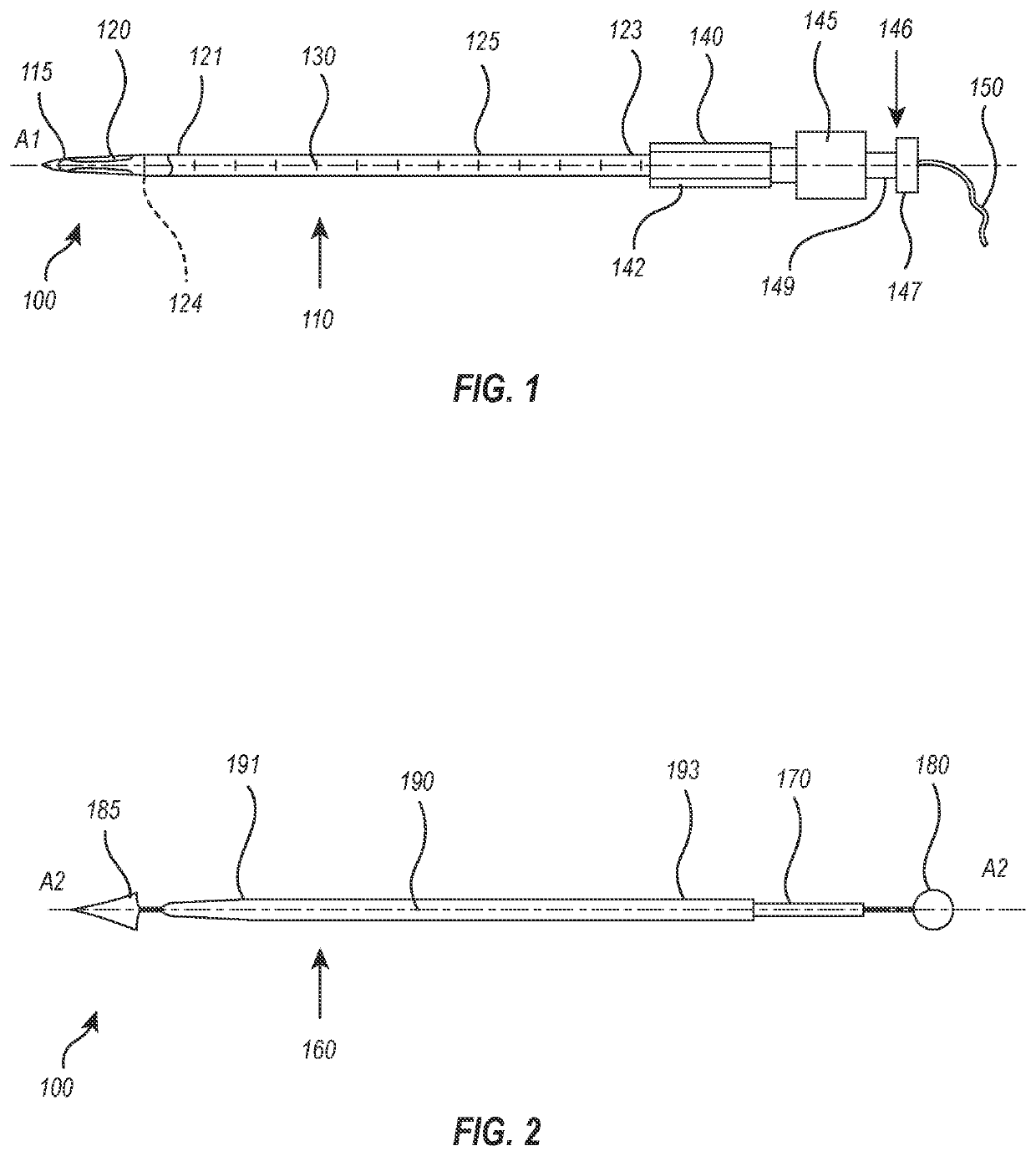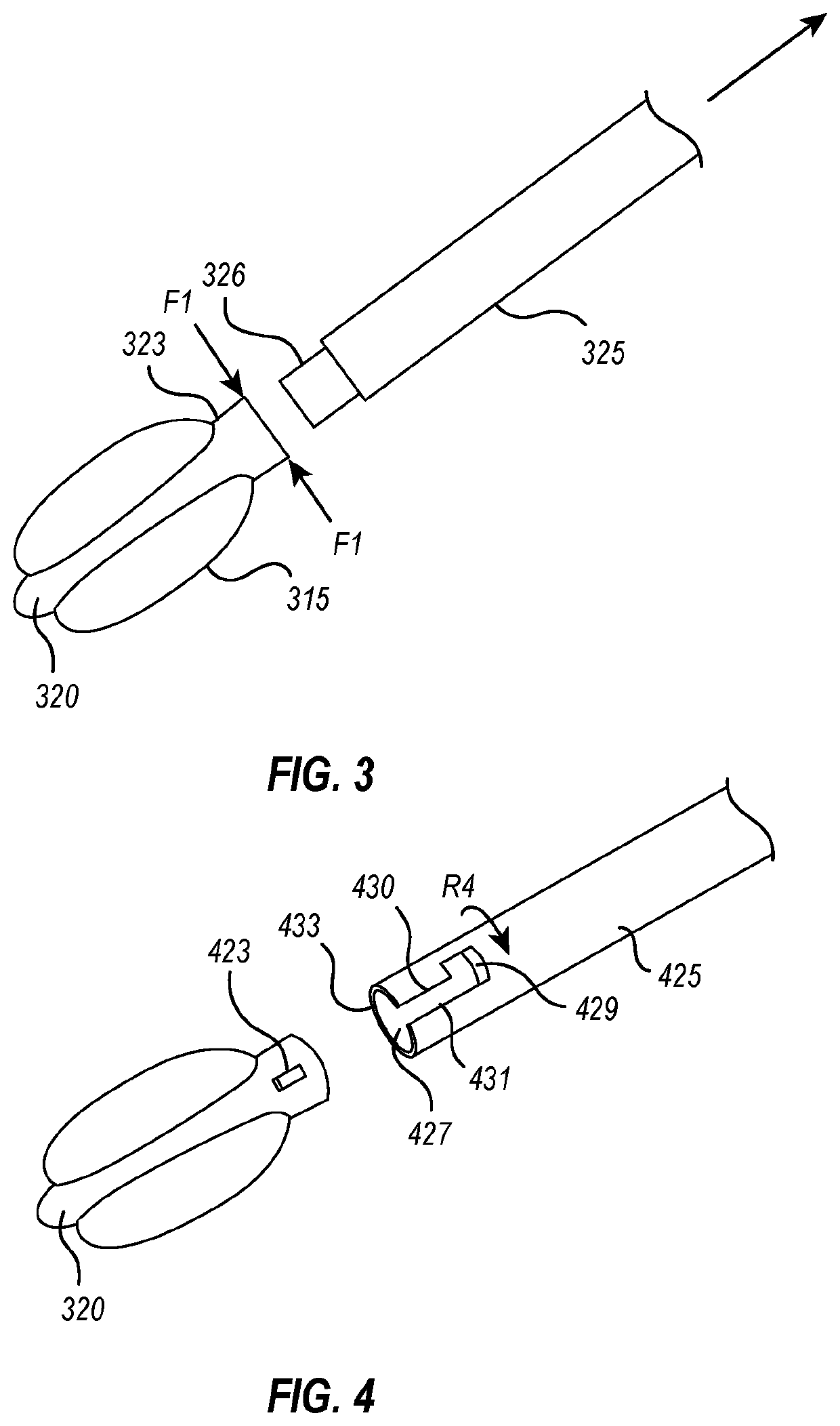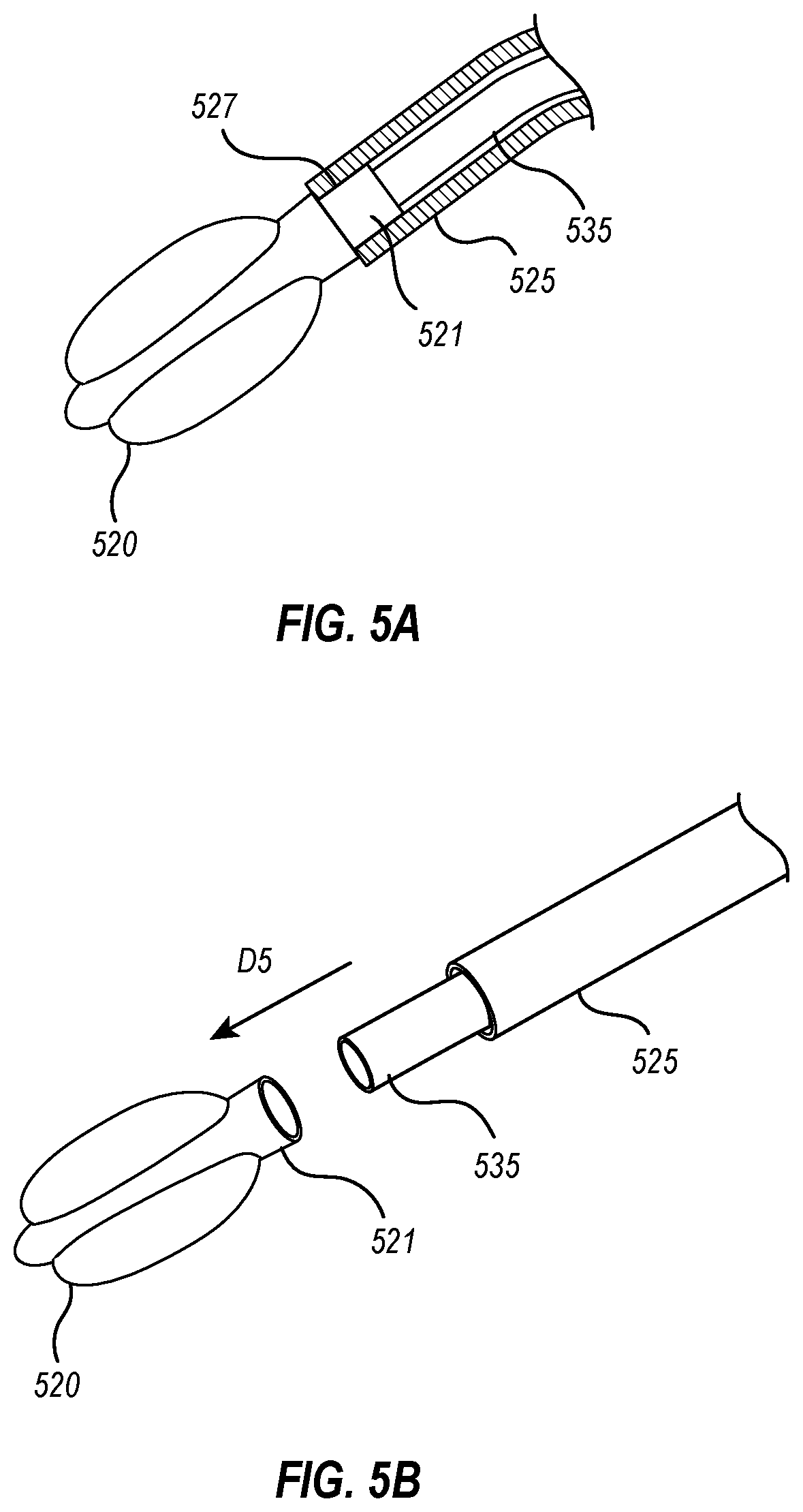Access closure device
a closure device and access technology, applied in the field of access closure devices, can solve the problems of increasing the time required before reducing the efficiency reducing the time required for completion of the manual compression procedure, so as to reduce the complications of post-procedure steps and the effect of reducing the time required for completion and reducing the time required
- Summary
- Abstract
- Description
- Claims
- Application Information
AI Technical Summary
Benefits of technology
Problems solved by technology
Method used
Image
Examples
embodiment 1
[0169] An access closure device including a balloon delivery system. The delivery system includes a balloon, a balloon segment, at least one valve, and an attachment portion. The balloon segment, configured to support the balloon, has a lumen and a plurality of openings in fluid communication with an interior of the balloon and the lumen. The at least one valve is configured to selectively seal the lumen of the balloon segment. The attachment portion, proximate the at least one valve, is configured to releasably couple the balloon segment to a portion of the balloon delivery system.
[0170]Embodiment 2: The access closure device of embodiment 1, wherein the balloon delivery system comprises a delivery shaft configured to releasably couple to the attachment portion of the balloon segment.
[0171]Embodiment 3: The access closure device of any of the embodiments 1-2, wherein the delivery shaft includes at least one weeping port proximate the balloon segment and in fluid communication with ...
embodiment 15
[0183] A method for closing an access track, the method including the steps of providing a procedural sheath through the access track in a body lumen, advancing a balloon delivery system comprising a balloon and a balloon segment releasably attached to a delivery shaft into a lumen of the procedural sheath and into the body lumen, partially inflating the balloon of the balloon delivery system, retracting the balloon delivery system until the balloon contacts a distal tip of the procedural shaft, and retracting the balloon delivery system and the procedural sheath outwardly from the body lumen through the access track until the balloon contacts an inner wall of the body lumen such that resistance to further retraction is generated.
[0184]Embodiment 16: The method for closing an access track of embodiment 15, further including the steps of retracting the procedural sheath a distance to align with at least one indicium defined on an outer surface of the delivery shaft, and tensioning at...
PUM
 Login to View More
Login to View More Abstract
Description
Claims
Application Information
 Login to View More
Login to View More - R&D
- Intellectual Property
- Life Sciences
- Materials
- Tech Scout
- Unparalleled Data Quality
- Higher Quality Content
- 60% Fewer Hallucinations
Browse by: Latest US Patents, China's latest patents, Technical Efficacy Thesaurus, Application Domain, Technology Topic, Popular Technical Reports.
© 2025 PatSnap. All rights reserved.Legal|Privacy policy|Modern Slavery Act Transparency Statement|Sitemap|About US| Contact US: help@patsnap.com



